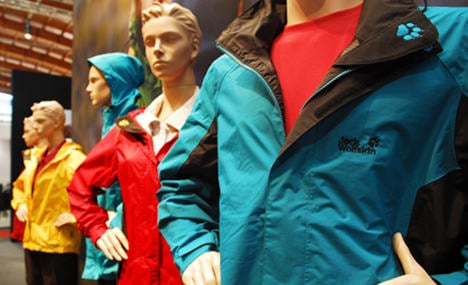Sales of the sector, which has constantly evolving contours, is estimated at €1.8 billion ($2.6 billion) in Germany, about 30 percent of the European market according to an estimation by the distributor Intersport.
Global growth has been “substantial” in past years and now boasts sales of around €10 billion, added the European Outdoor Group (EOG).
The success of Jack Wolfskin, a German brand that has risen to the top spot in Europe, gives an idea of the boom.
Its sales have gained an average of 25 percent per year for the past seven years and amounted to more than €300 million in 2010.
In July, the US investment fund Blackstone bought Wolfskin, which uses a paw print as its logo, for almost €700 million, or more than seven times what it was worth in 2005.
Wolfskin caught on early to the potential created by outdoor lifestyles.
“Ten years ago we opened stores in German shopping malls, no one dared to do that at the time. And it worked very well,” sales director Markus Bötsch said. “Up till then the outdoor sector was a niche market of sports equipment but consumers progressively recognized the quality and practicality of these products for everyday use,” he added.
In Germany, where consumers give a higher priority to clothing’s practical side over style, windbreakers and jackets that breathe are seen more and more often in cities.
They also sometimes serve to signal a certain “passion” and “philosophy” for outdoor activities and environmental issues, “irrespective of whether it’s true or not,” EOG secretary general Mark Held said.
From its discrete headquarters in Idstein, a cozy town north of Frankfurt, Wolfskin wants to expand in France, Britain, eastern Europe, and in China which is already its second biggest market after Germany.
Other German outdoor companies are often older family firms, like the hiking boot maker Meindl, clothing company Schöffel, or backpack manufacturer Deuter, and they mostly sell their products in German-speaking countries.
Wolfskin must nonetheless deal with competition from compatriot Adidas, which also wants a share of the leisure sports market.
Outdoor products already represent “around 20 percent of the entire sport market” and “attracts more and more young people,” said Rolf Reinschmidt, head of Adidas’ outdoor division.
With sales of outdoor products at €200 million last year, it has only a modest global market share but the group aims to reach €500 million in sales by 2015.
The group’s outdoor unit sales gained 21 percent in 2010 and rose “by almost 40 percent in the first half of 2011 on an annualised basis,” Reinschmidt said.
The brand with three stripes is backed by a global distribution network, and plans to introduce a line of hiking shoes and other products in the United States this year.
Another German company, Puma, is aiming for the upscale markets for safari and sailing wear. The French group PPR, which owns Puma, has also bought the US company Volcom, which markets clothing for several types of gliding sports.
AFP/mdm



 Please whitelist us to continue reading.
Please whitelist us to continue reading.
Member comments